PAX West 2023: A VR Experience
Three stand out VR games to keep an eye on
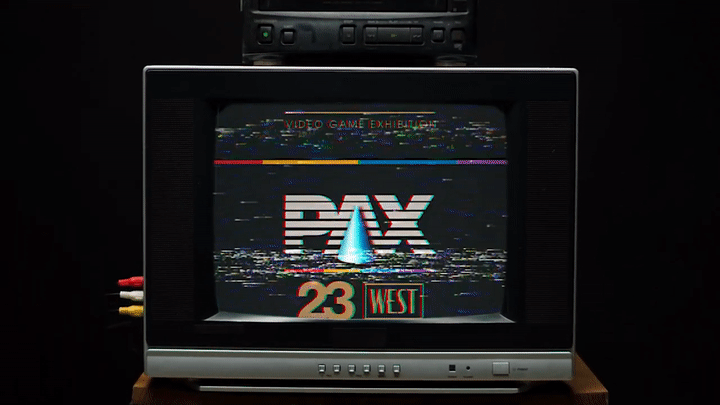
Throughout the weekend of September 1st, PAX West 2023 was in full-swing in the beautiful Emerald City of Seattle, Washington. The city streets were once again littered with tens of thousands of individuals from all around the globe, gathering together in harmony to celebrate all things video games. Last year, the new Summit Convention Center in Downtown Seattle had yet to be finished, so the vast majority of PAX was held in the historic Arch Convention Center. This year, however, the Summit Convention Center is open for business, and PAX West 2023 was so big that it spilled into both of these massive buildings!
PAX West 2022 was a fantastic experience, full of great games, interesting shows, and lots of merchandise for sale. This time last year, Covid restrictions meant that only a fraction of the Expo's usual turnout appeared to share in the nerd revelry. This year, however, the restrictions have been lifted, and so too have the flood gates for an absolutely packed PAX West, with over 120,000 visitors coming in-and-out of the city over the four day period. I was lucky enough to be one of these individuals, with PAX West graciously allowing me once again to have media access, seeing everything the show had to offer, and playing as many games as I could get my hands on.
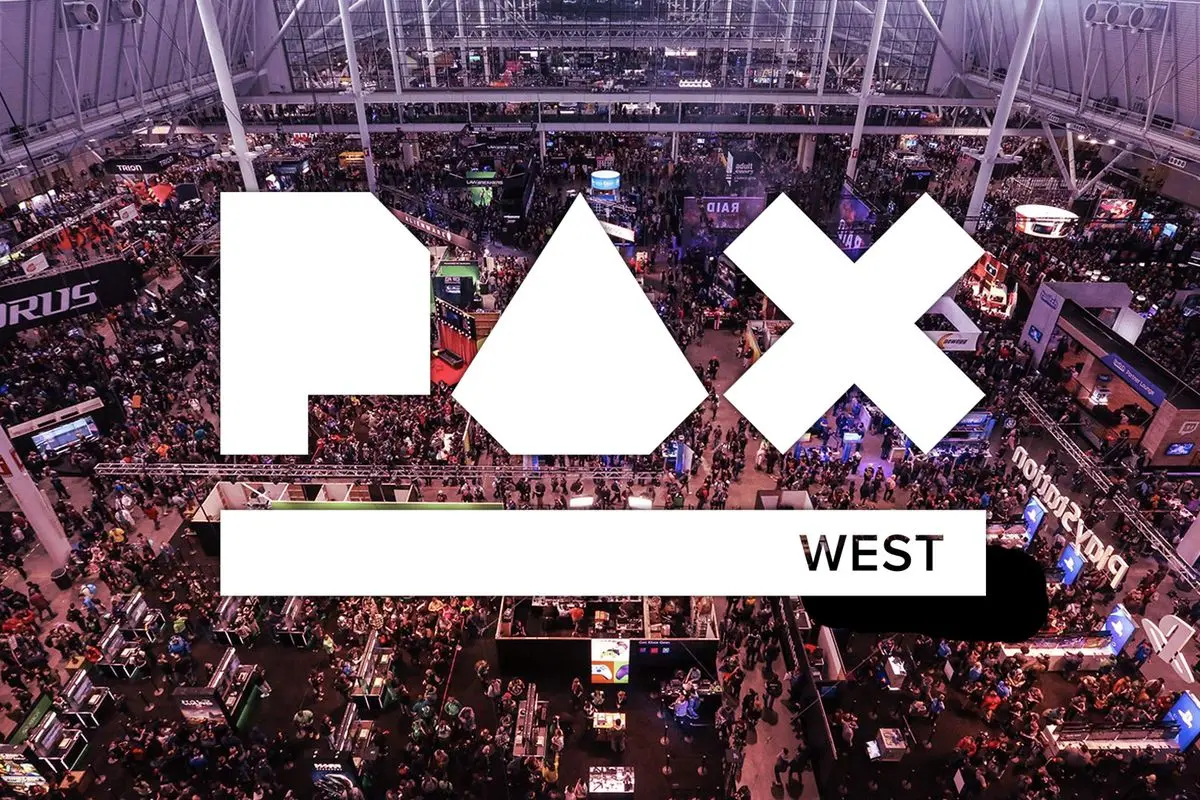
My first foray into PAX West 2023 was to strap on various virtual reality peripherals and leave behind the hustle and bustle of the convention to embark on a few digital adventures. I played three VR games in total on the show floor this year - Archiact Interactive's story driven sci-fi epic Journey to Foundation, Thirdverse's competitive hero shooter X8, and Fast Travel Games' new entry into their massive series, Vampire The Masquerade - Justice.
Journey to Foundation
Journey to Foundation is a narrative-driven first person VR game that's been in development for over 3 full years. It's been built from the ground up for the PSVR2 as well as the Meta Quest, and at PAX I was able to try the PSVR2 build (which was subsequently also my first hands-on experience with the PSVR2.) Journey to Foundation is based almost entirely off of Isaac Asimov's 7 book Foundation series, originally published in 1951. Nowadays, science fiction is a huge part of popular culture, and you seemingly can't step two feet in either direction without running into something Star Wars or MCU related. Back in the '50s, however, the genre was experiencing what many deem as the "Golden Era" of sci-fi. Isaac Asimov was – and still is – considered to be a titan of the sci-fi world, with his Foundation series being a bench mark for standard in the realm of science fiction. It is that monumental foundation (pun intended) that Journey to Foundation is based on.
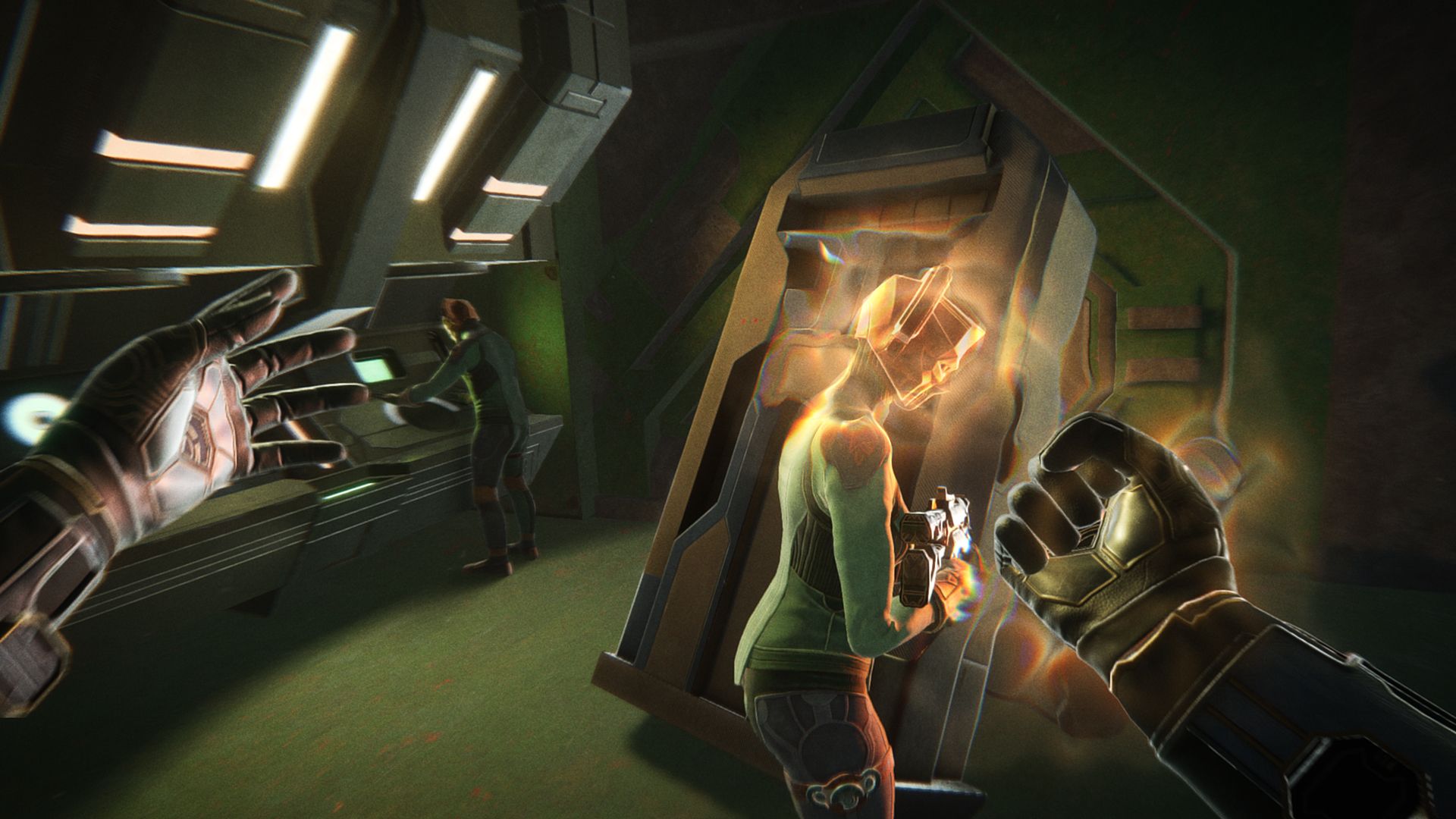
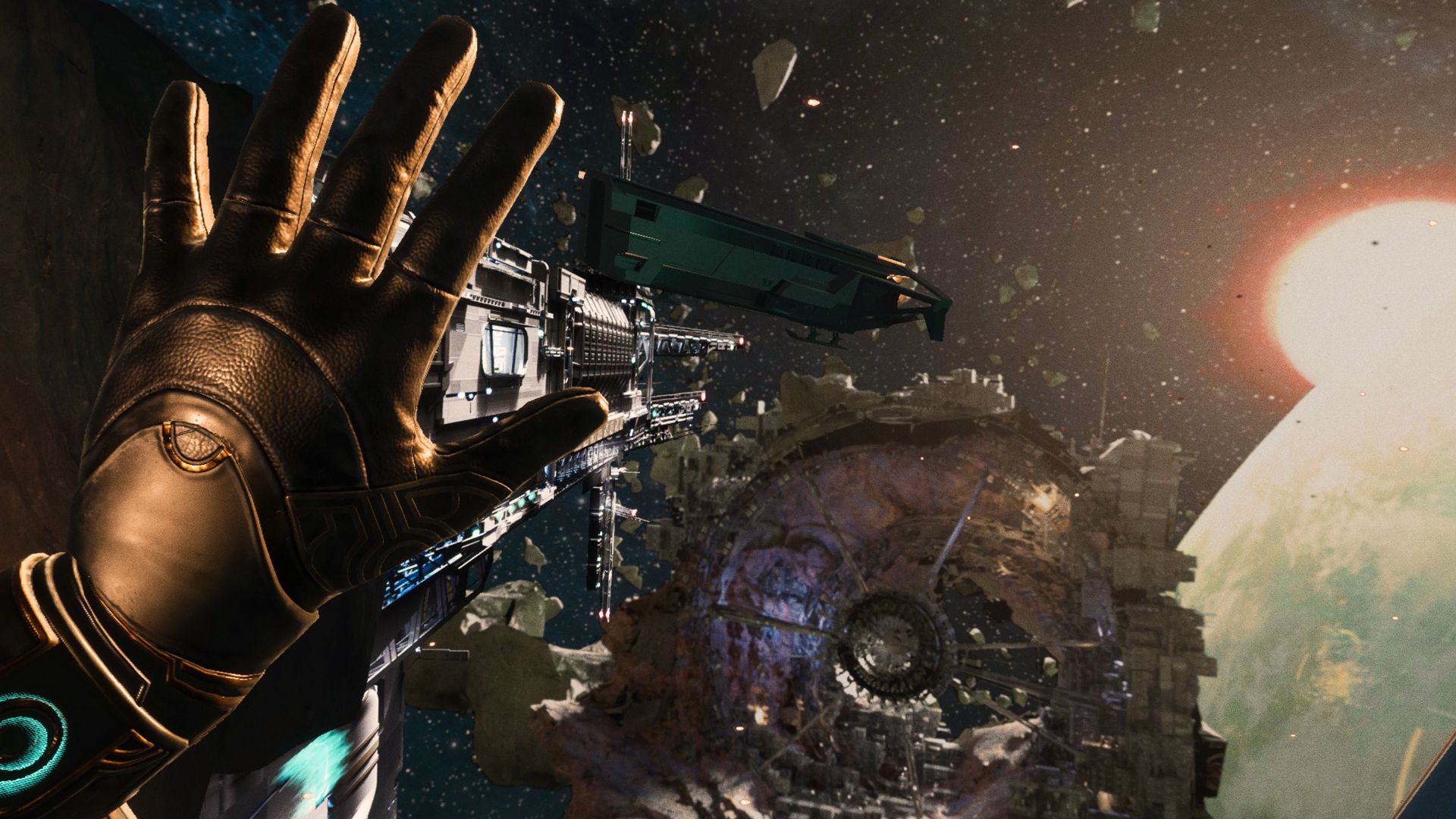
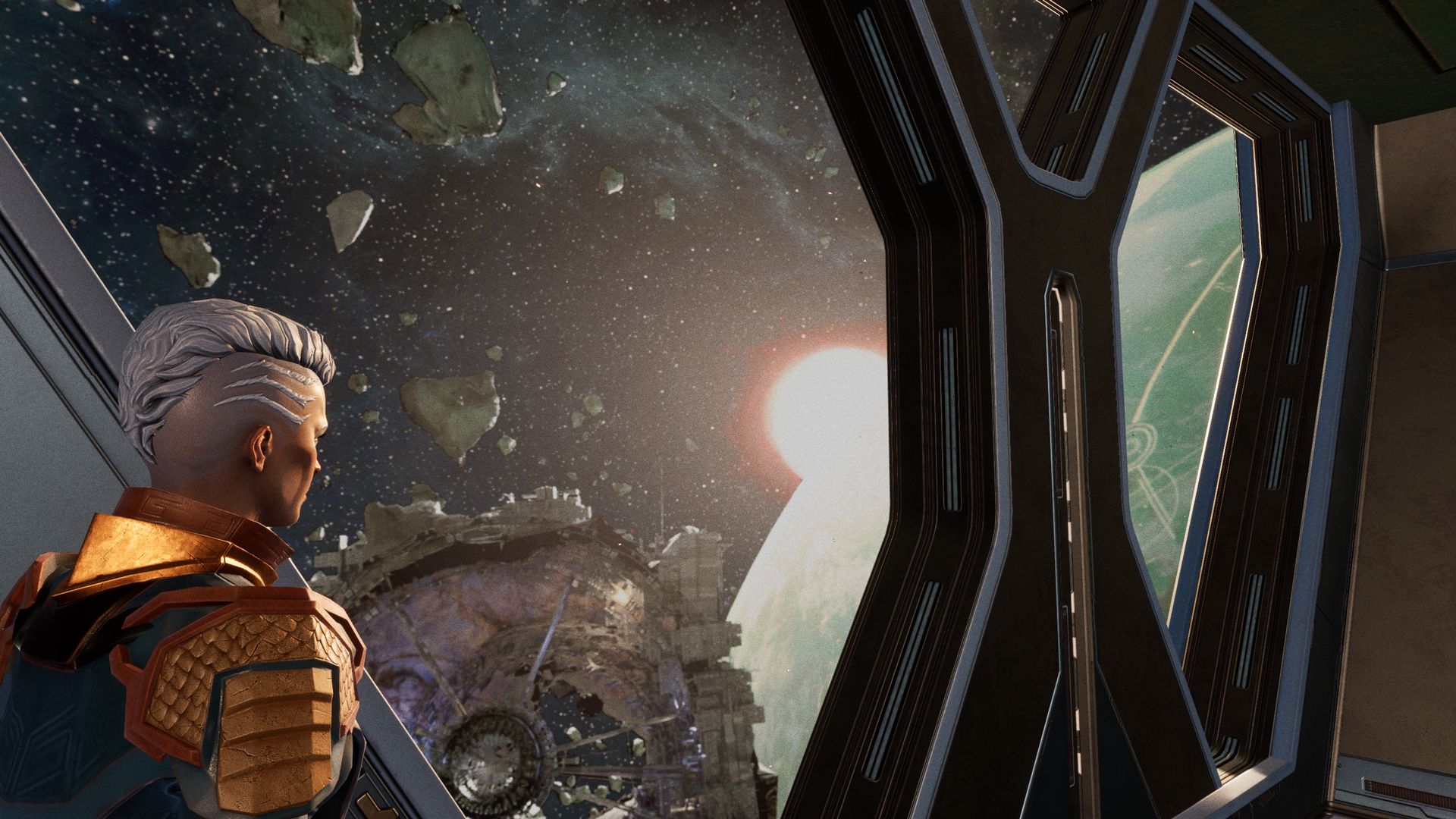
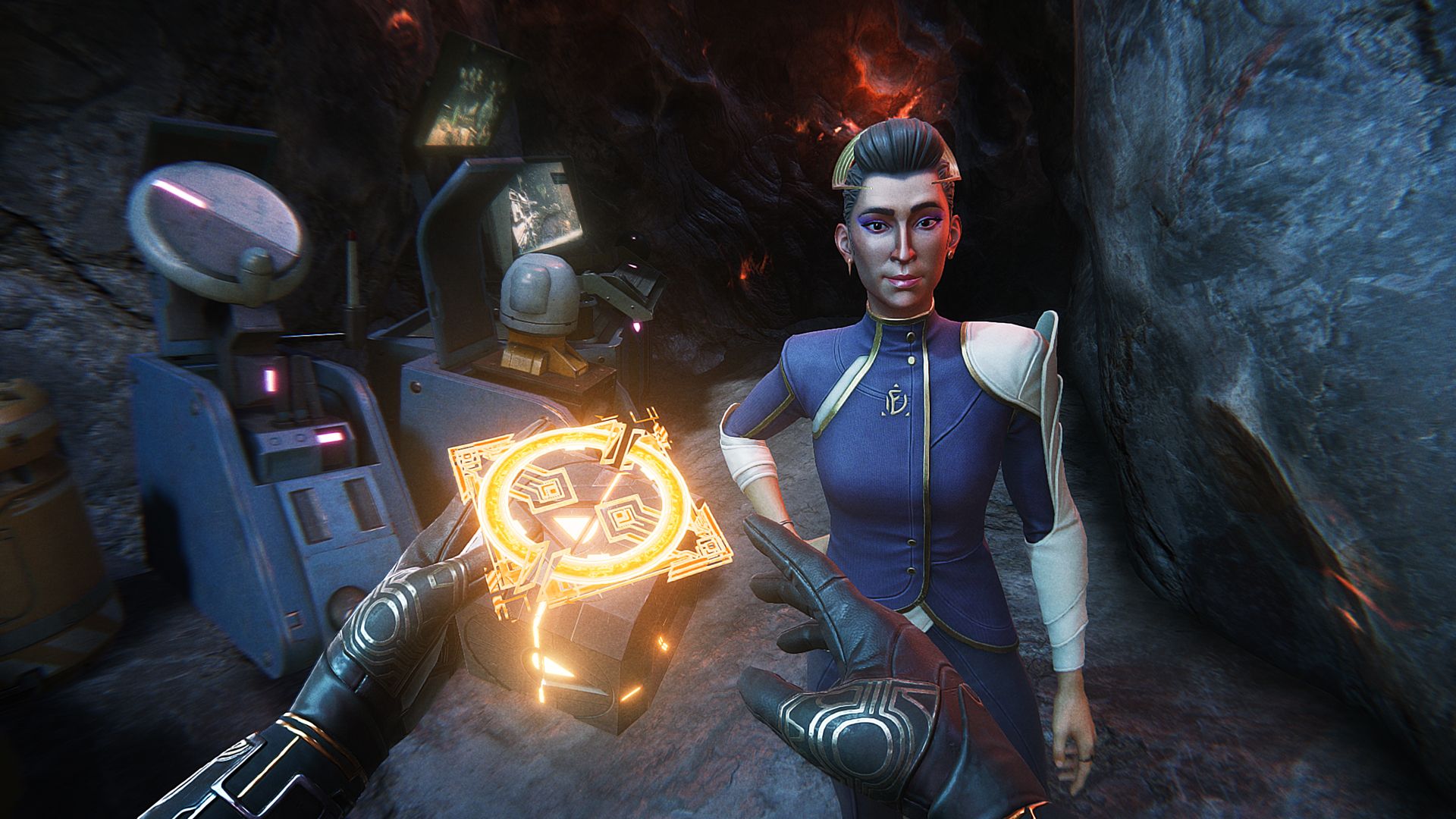
Source: Journey to Foundation Press Kit.
Journey to Foundation is attempting to adapt this illusive property in an immersive and complex medium, hence why it was decided to be released as a VR game as opposed to a console experience. The team at Archiact Interactive felt that the world of Foundation would be much better understood while strapped into a VR headset, due to the unequivocal immersion VR brings compared to holding a controller. Along with this, they saw a worrisome need that plagues the VR games industry as a whole; there just aren't many hard-hitting narrative driven VR games.
The story of Journey to Foundation follows Agent Ward - a spy sent to the edge of the universe to infiltrate a group of deserters. While on their mission, they will discover a powerful truth; one that will change the course of history, forever. Players must decide whether they stay loyal to the Galactic Empire, potentially dooming the universe to 30,000 years of chaos, or side with the deserters, becoming a traitor but potentially creating a cradle for humanity in the process. Players will be able to make decisions that color their stories and change certain outcomes surrounding their choices.
I was able to briefly step into the shoes of this spy, and take a test drive in a world attempting to bring to life something so instantly iconic.
Everything in Journey to Foundation has the same retro-future look that many sci-fi movies from the time have – you get the immediate sense that the world you're inhabiting is what someone decades ago would think decades ahead would look like, and Archiact Interactive has done a wonderful job in recreating Asimov's vision of the future. Everything from the set, to the character designs, to the weapons and powers used to devastate your enemies look like something out of a black-and-white movie from the era. Many VR games run into a problem of proportions, as people tend to look significantly smaller than their real-world counterparts while inside a headset. Journey to Foundation's particular stylization of characters allows for immersion without trying to look too realistic. The result helps combat many of the issues seen within narratively driven VR experiences. Scenery is appropriately large and grandiose, and you truly do get the feeling that you're hurtling through spaces in some faraway galaxy. On the powerful PSVR2, textures were rendered crisply, and pop-in and slowdown were virtually non-existent.
The attention paid to Isaac Asimov's masterpiece series, along with the passion for VR games and good storytelling, could potentially make Journey to Foundation a must-have for anyone with a VR headset.
Gameplay was smooth and responsive (despite a few glitches I ran into,) with a lot of different accessibility options to better optimize the experience of your everyday VR user. In the brief section of game I experienced, combat consisted of two separate options. The first option – your firearm – is your quick and reliable resource for dispatching enemies. Your firearm has three separate firing modes; the first is a standard handgun/rifle, the second is a shot gun, and the third is a sniper rifle. There is a small plate on the back of your firearm that can be swapped out for other plates located on your wrist, with each plate representing a different firing mode option. This can be changed instantaneously on the fly, if you're able to smoothly change the plates out in the heat of combat. The second option is significantly more obtuse. In the demo, you are given the ability to point your left hand at the head of your attacker, and, for lack of a better explanation, melt your enemies' brains. This allows for some interesting combinations, as your left hand can be used to distract enemies while your right hand can be used to finish them off with your firearm.
All-in-all, Journey to Foundation is shaping up to be an interesting and in-depth narrative driven experience to grace the libraries of VR users. The attention paid to Isaac Asimov's masterpiece series, along with the passion for VR games and good storytelling, could potentially make Journey to Foundation a must-have for anyone with a VR headset.
Journey to Foundation does not currently have a set release date, but it is expected to be released in late fall of 2023 for the PSVR2, the Meta Quest 2, and the PICO.
X8
Next up, I was able to strap in and play Thirdverse's VR hero shooter X8. X8 is a seek-and-destroy style online first person shooter, where the player must choose one of 7 different heroes to either kill everyone on the opposing team, or plant or diffuse a bomb within the allotted time. Each game is a 5v5 CS:GO-style match that relies on good team communication and tactical game play in order to achieve your team's goals. So far, so seek-and-destroy. What really sets X8 apart from other games in this genre is the fact that it is a hero shooter that greatly relies on you playing your class and using your class abilities appropriately.
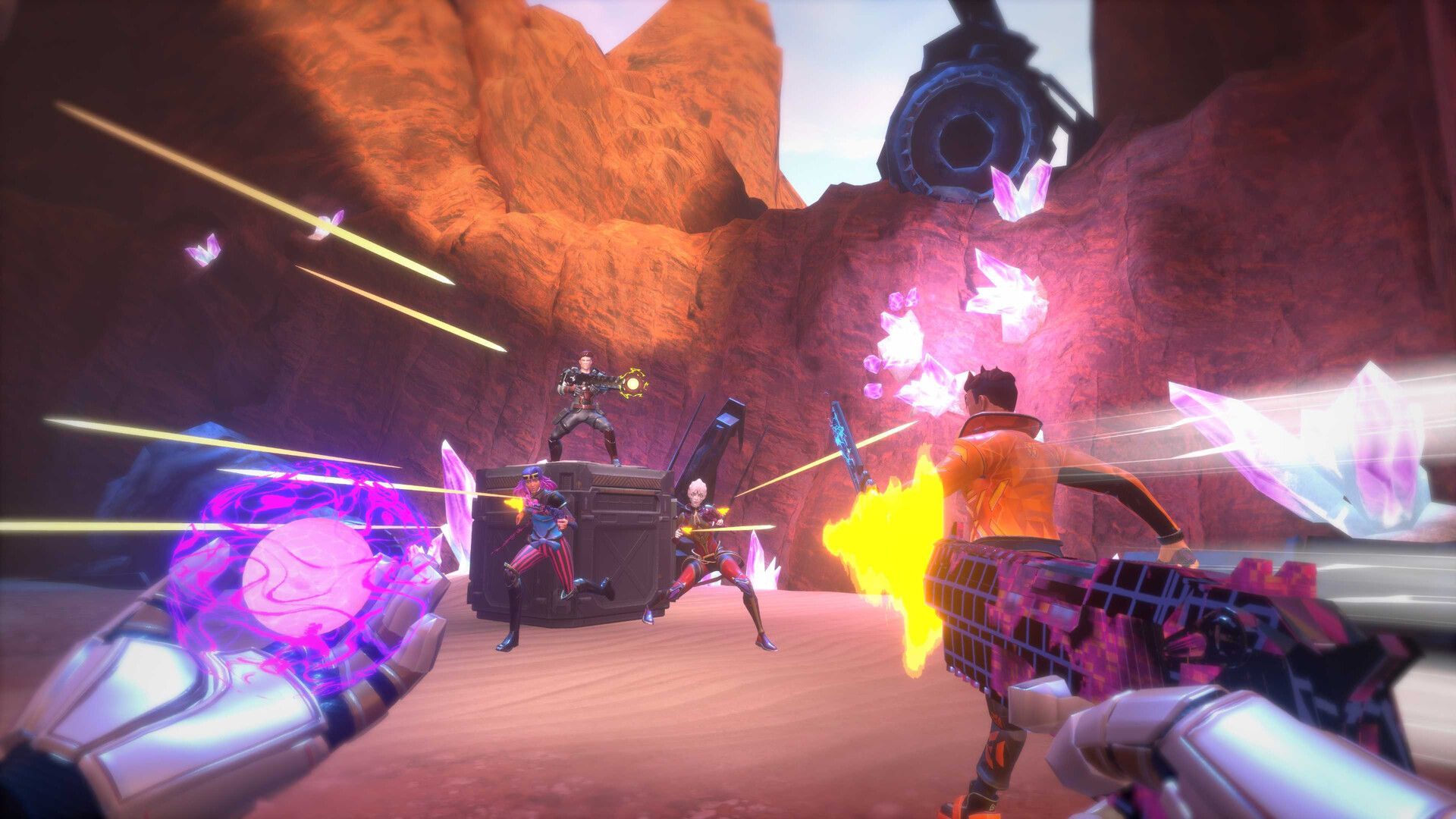
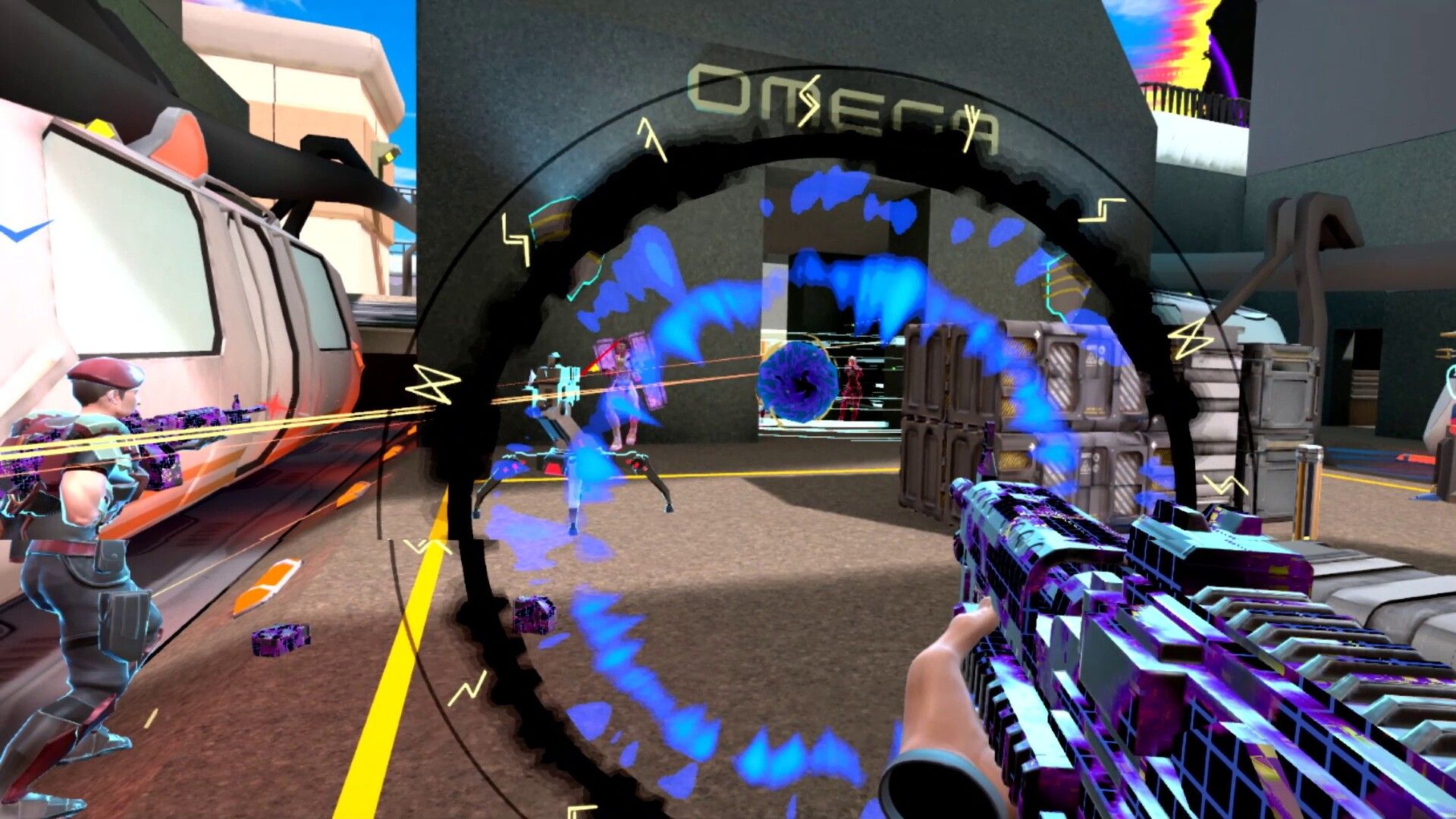
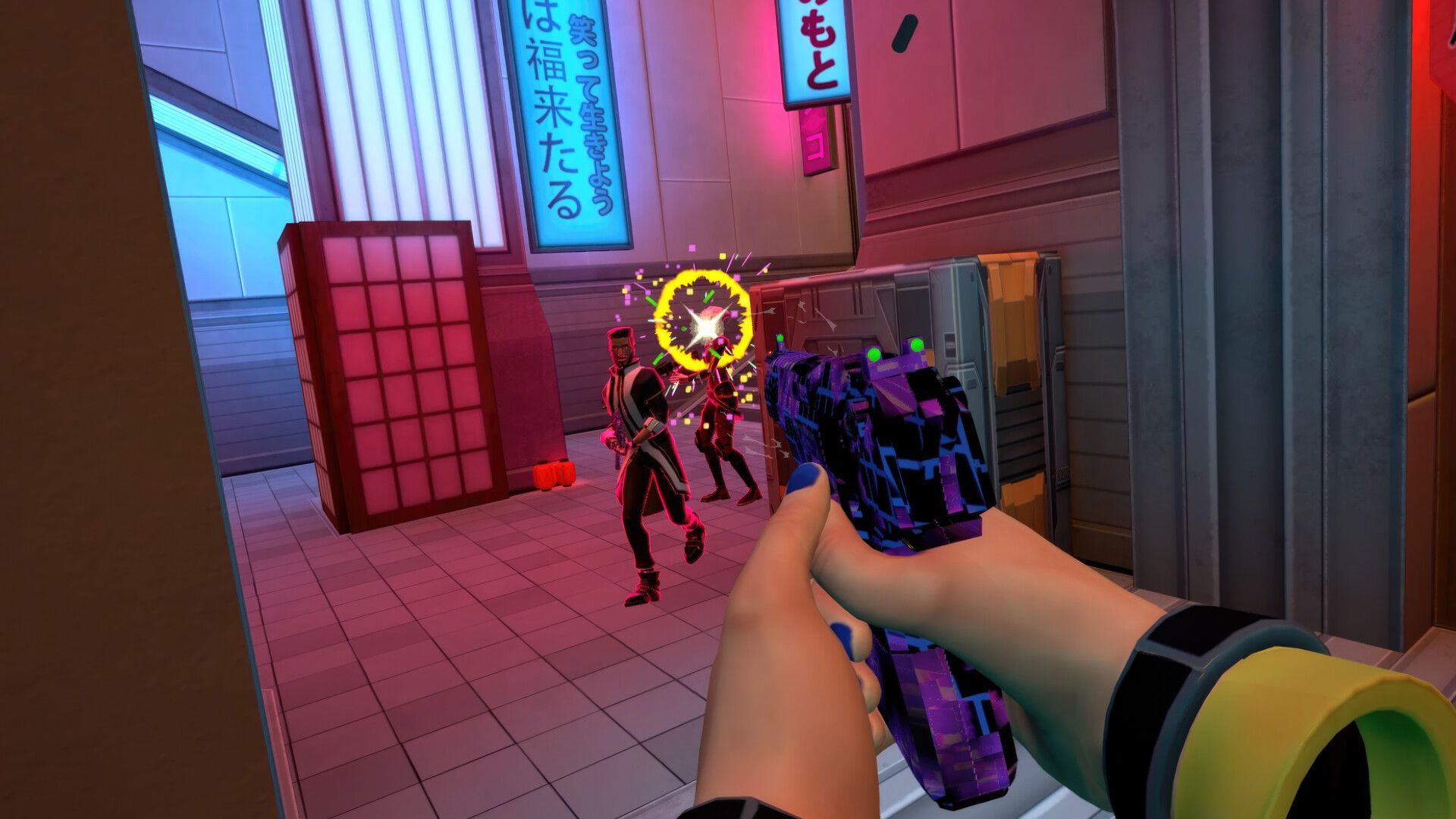
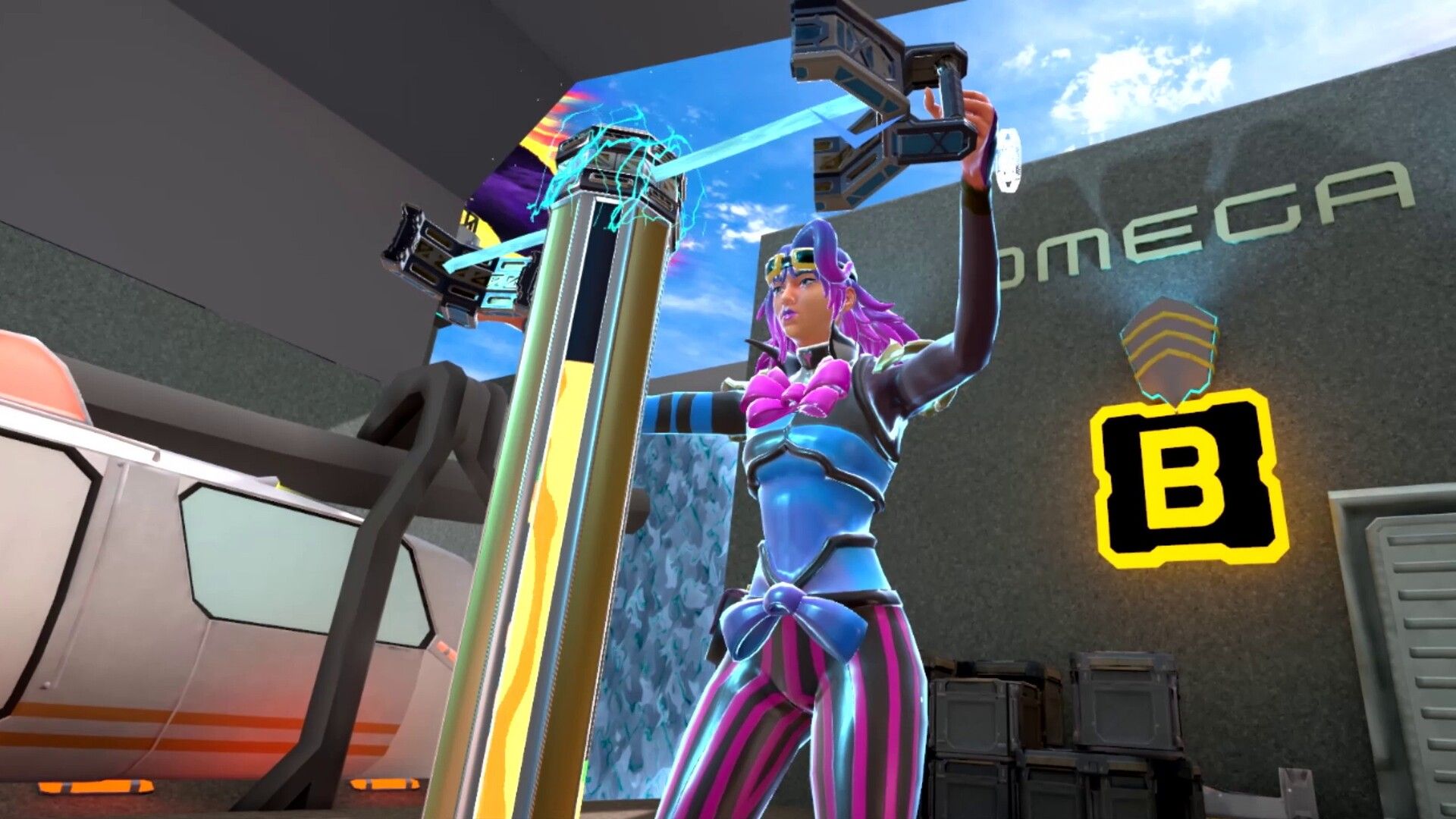
Source: Steam.
Visually, X8 is pretty impressive for a fast-paced multiplayer VR game that can run locally on a Meta Quest. Maps have plenty of space to visualize your attack and coordinate with your team, as well as provide hiding places and ambush spots for you and the enemy alike. Along with this, there are multiple areas of verticality that can be climbed hand-over-hand to give you an edge on the oncoming team.
The hero I got to spend the most time with at PAX was a blue-haired pig-tailed medic named Sarai. Along with her ability to heal, she also has a station pylon she can place to create hostile terrain for your enemies, as well as the ability to drop a massive impenetrable wall in the middle of the battlefield that damages enemies who touch it, as well as creating huge cover for you and your comrades. As a medic, this opens the door for huge possibilities revolving around creating defensive positions to heal up your teammates and defend your bomb point. Since I didn't have a ton of time to explore other heroes, I stuck to Sarai, but her abilities were exceptionally useful in suppression and defense, with none of them feeling like they were a waste or otherwise useless.
All-in-all, X8 is an extremely grafitying shooter that relies on quick reflexes and tactical thinking in order to win.
I was seriously impressed with the smoothness and speed on display in X8. A lot of FPS VR games have the tendency to feel weirdly light, like your movements and your weapons don't really have any weight or pack a punch. In X8, movement lines fill your vision while you're moving, allowing for a greater sense of speed. Continuous locomotion flows satisfyingly, while the climbing mechanics work effortlessly to let you traverse the environments. Your arsenal ranges from AK-47's to Desert Eagles to Vector SMGs, with each feeling appropriately punchy and distinct from one another. All-in-all, X8 is an extremely gratifying shooter that relies on quick reflexes and tactical thinking in order to win. The only drawback with the movement is that continuous locomotion seems to be the only way to move around within X8, so if you get easily motion sick, this title may not be for you.
When talking to Thirdverse Studios co-founder Nogi, he informed me that Thirdverse is incredibly happy with the reception of X8 thus far, with the title garnering nearly 100,000 concurrent players. He said he is proud to be the studio that fills the void of hero shooters on VR, and urges anyone interested to join the active Discord server if they want to get more involved with the community.
X8 is available to download for free on Meta Quest 2, PSVR 2, and Steam.
Vampire The Masquerade - Justice
What would it be like to experience the world as a powerful vampire? To stalk the night, looking for victims to feast upon, using your otherworldly powers to navigate dark alleyways and cause chaos? Vampire The Masquerade - Justice set out to answer that questions and – in my humble opinion – it completely nails it.
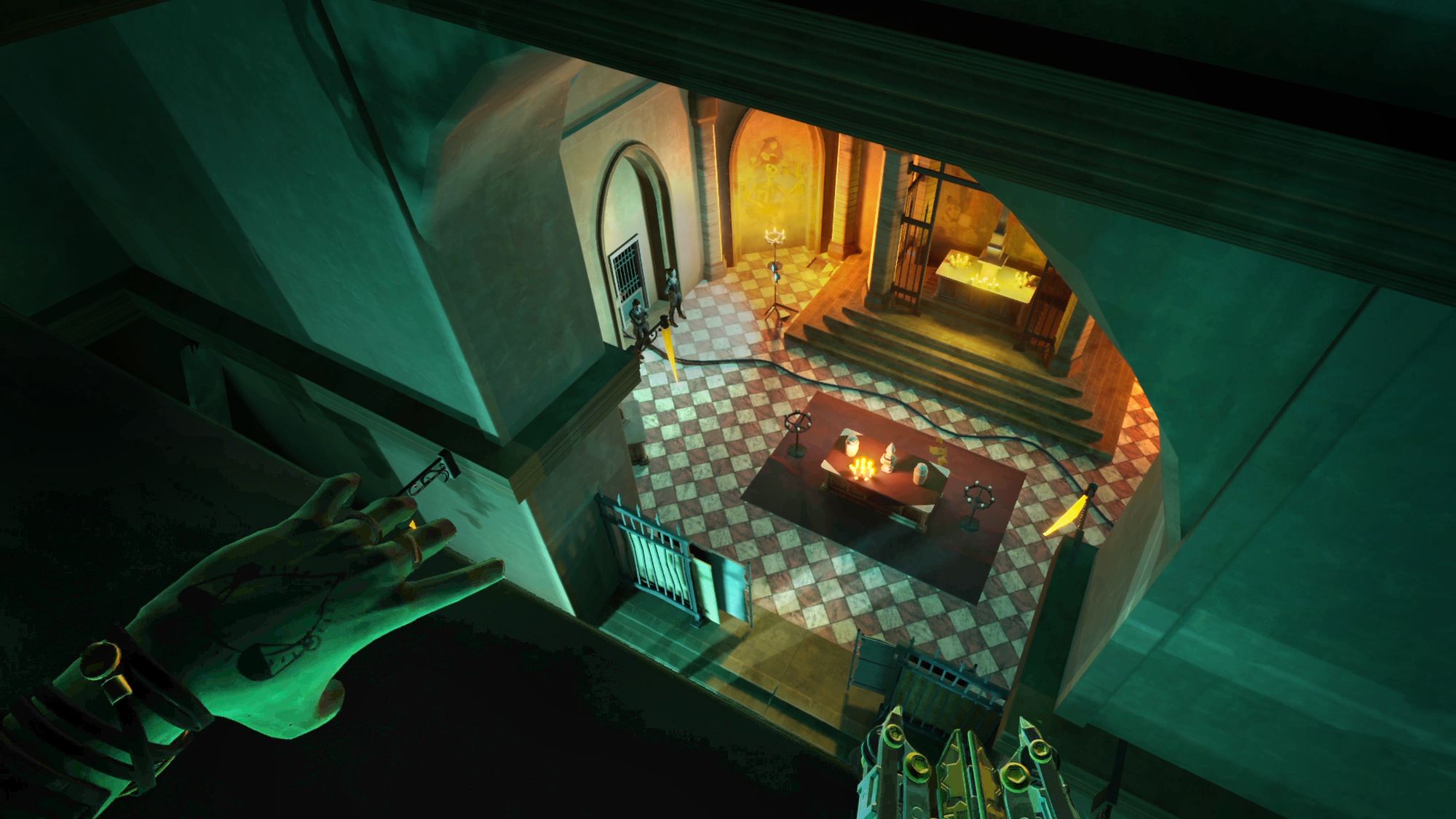
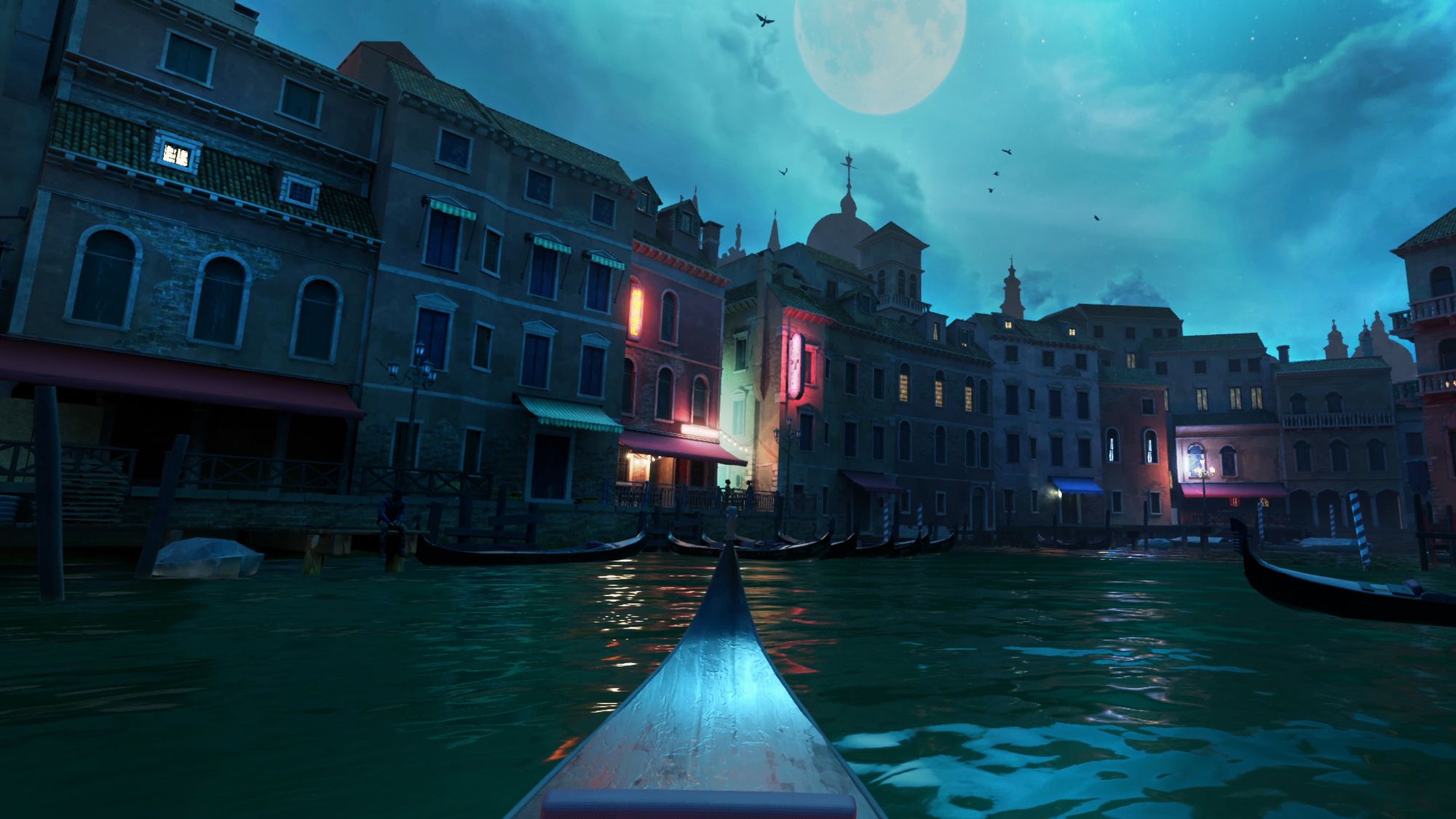
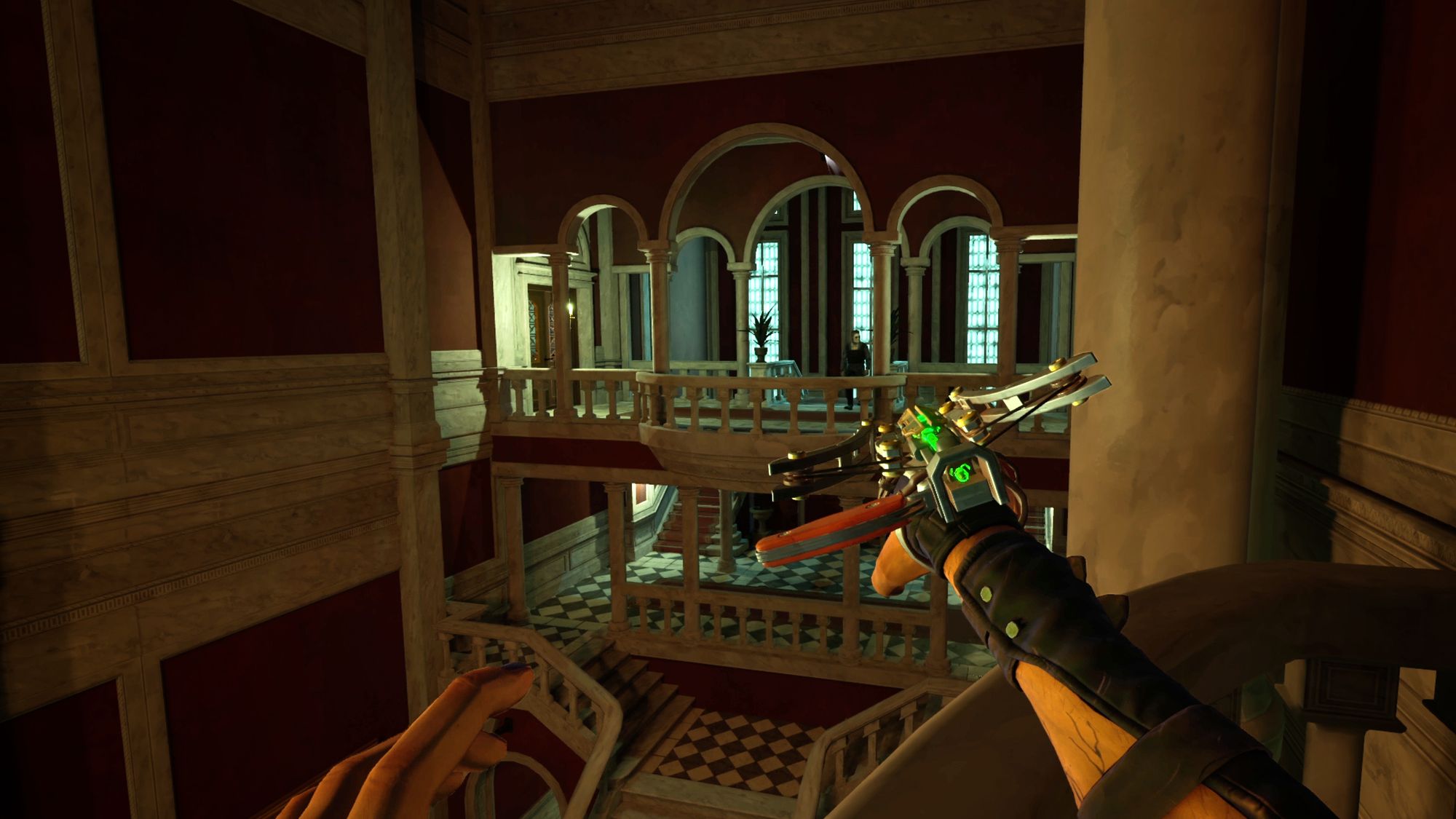
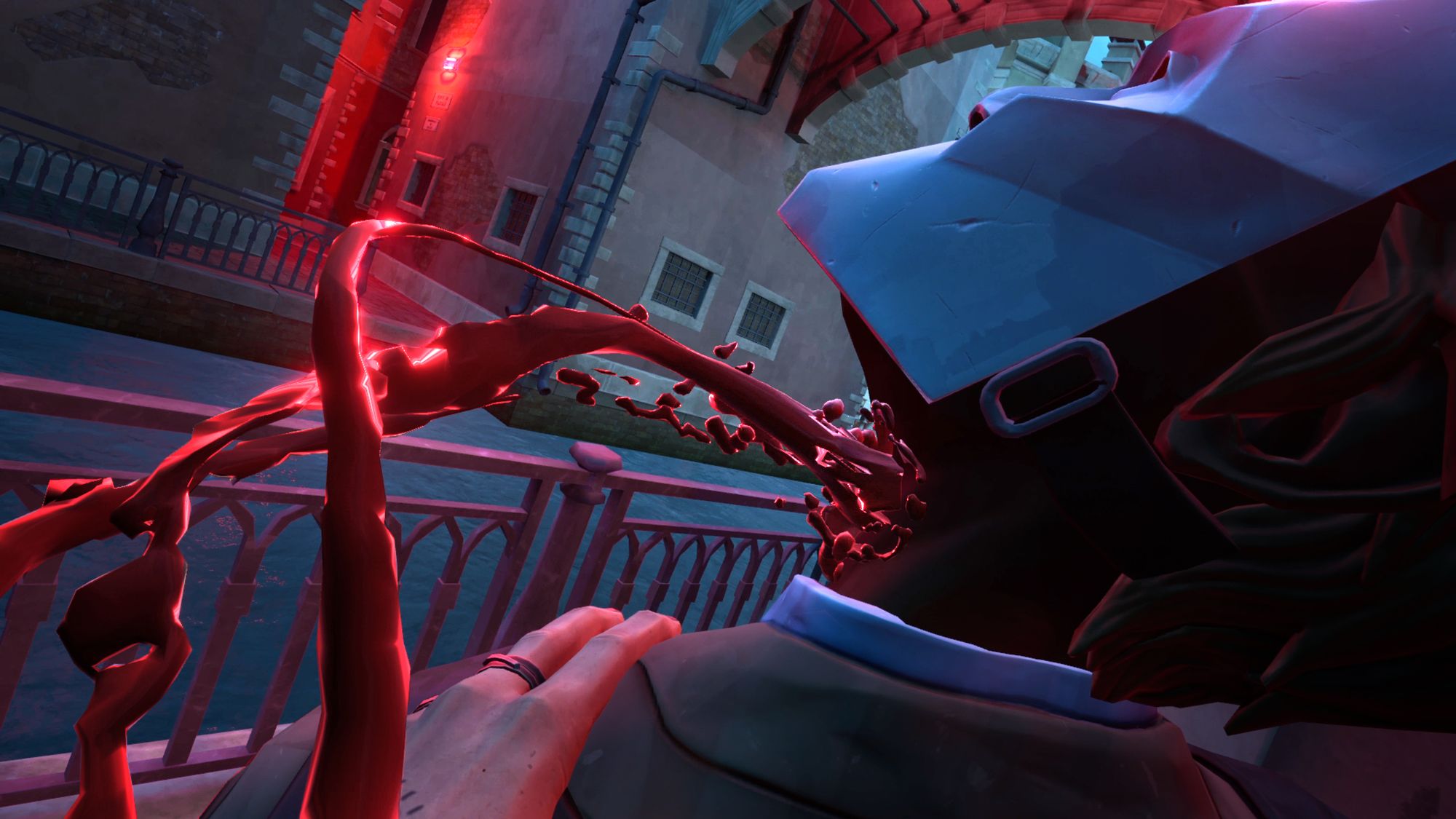
Source: Vampire The Masquerade - Justice Press Kit.
Vampire The Masquerade - Justice is the latest in a long line of games based off the Vampire The Masquerade board game. In Vampire The Masquerade - Justice, you take control of Justice, a vampire on a mission to seek revenge for the slaying of their mentor. You will do so by stealthing your way around the beautiful canal city of Venice, Italy, using your vampire powers to evade enemy detection, feed your blood-lust, and decimate the mortals (and enemy vampires) who stand in your way.
The hands-on demo I got to try at PAX was genuinely one of the most fun experiences I've had in VR since Half-Life Alyx. Vampire The Masquerade - Justice is quite a pretty game, with the dark and foreboding corridors of Venice coming to life right in front of your eyes. The city itself feels seedy and thriving – you will see at least a few goings-on that make Venice feel like somewhere you wouldn't want to be at night. Dirty, desolate streets are accompanied by disembodied screams in the darkness, adding to an atmosphere that gives Venice an overwhelmingly foreboding ambiance.
Vampire The Masquerade - Justice looks like it's going to be another solid offering for VR owners, and definitely something to check out if you own a headset.
Much like the other VR games I tried on the show floor, Vampire The Masquerade - Justice plays surprisingly smoothly. Movement is slow and methodical, with the objective ultimately being to get in-and-out without being seen. There are special powers gifted to you through your vampirism, such as the blink ability that was available during the demo. Much like the Dishonored series, using blink allows you to instantaneously teleport to any location within range that you point at. On top of this, you are also given the ability to detect heartbeats through walls, giving you the upper hand when it comes to ambushing your prey.
In order to power these abilities, you must feed to charge up a meter, which in turn depletes when your abilities are used. To do this, you can either sneak up on an unsuspecting enemy, grab a hold of them, and drink their blood, or you can grab a hold of the various rats infesting Venice and snack on them in desperate situations. There are other ways of dispatching enemies, such as blinking on top of them, causing them to go flying into walls and other objects, as well as a wrist-mounted crossbow, but the most effective way of dealing with your situations is to remain in the shadows and drain your prey. Vampire The Masquerade - Justice looks like it's going to be another solid offering for VR owners, and definitely something to check out if you own a headset.
Vampire The Masquerade - Justice is coming out November 2nd for the Meta Quest and PSVR 2.
And thus, my foray into PAX West VR experiences ended. All three games I tried on the show floor were some seriously intriguing offerings for hardware that can sometimes feel largely ignored in the gaming world. If you own a VR headset, and are looking to add some quality games to your library, I highly recommend any of the three games I tried at PAX.
